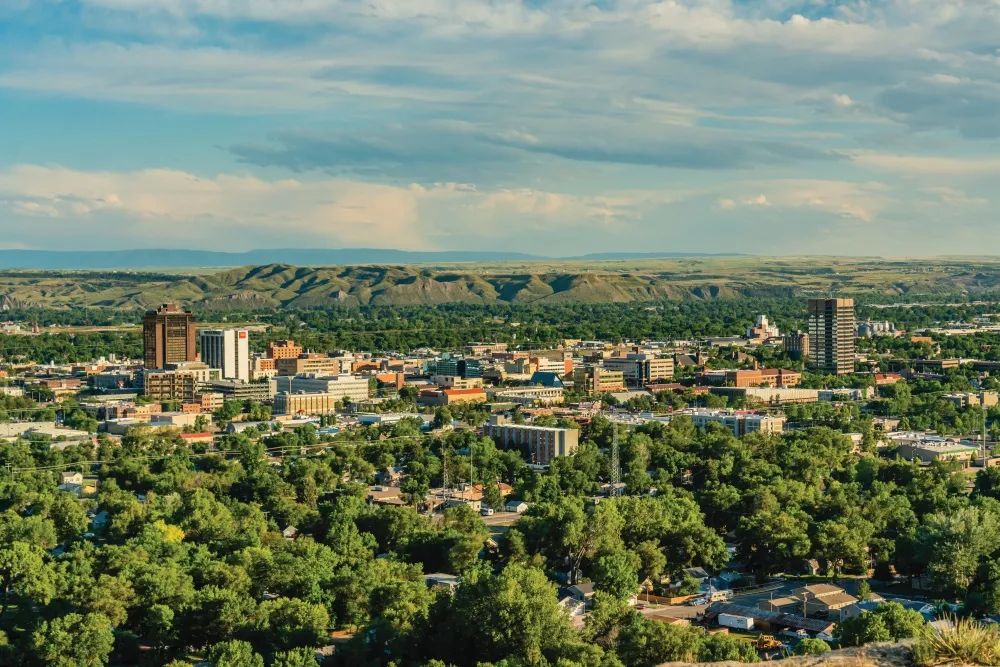
Urban Tree Canopy
September 2022
by anna rogers
“He that plants trees loves others besides himself.”
- Thomas Fuller
What makes a place feel like home? Comfort, ownership, privacy – these are things that we all value, key elements that make a home. We’re also seeking a space that is functional and beautiful to us – something that offers respite and sparks joy. We are looking for this in our personal residences but also in the places we call home – our neighborhoods, communities, and cities.
In any space – from front yards to city blocks to gravel drives – you’d be hard-pressed to find anything that universally meets the desired elements of “home” the way trees do. Their shade provides comfort, and their branches give privacy. They are functional and beautiful, and we can take pride in their presence.
To build a home is to plant, tend, and enjoy trees. And as a city, we see the benefits of a healthy tree canopy and the need to continue our efforts in making this the home we all desire.
Trees Are the Bee’s Knees
Trees have many measurable benefits, but much of what makes trees so special is hard to gauge with data and numbers. We know that trees have a positive effect on mental health. They can lower blood pressure and relieve stress, which is especially important in urban settings with higher rates of stress-related problems.
Urban trees bring a sense of calm into the chaos. They foster a sense of community by bringing shade and beauty to public shared spaces. Trees in neighborhoods encourage more physical activity, improving air and water quality, thus improving all inhabitants’ physical health.
Adding trees to an urban setting helps to mitigate some of the negative impacts of urbanization and makes a city and its residents more resilient to the changes that come with population growth. As climates become hotter and drier, trees provide cool. Their roots aid against erosion, their branches shelter birds and other wildlife, their shade keeps us calm and cool, and their beauty reminds us of nature’s steadfastness.
Bright falling leaves promise of a spring to come, evergreens color our winters, budding lilacs in spring ignite hope in our souls, and dense green branches give us a respite in summer. Billings needs its trees and needs more trees to be the best home for us all.
Growing Our Canopy
Billings hasn’t always had the beautiful tree canopy that we now look down upon from the Rims, blanketing the city. As the town and city have grown, the number of trees has grown, too. These trees are vital on the high plains, especially in the hot summer months. Boulevard trees, trees in parks, and native trees in natural areas play key roles in a holistic community.
Natural areas have been a strong focus in Billings, particularly restoring riparian cottonwood forests to return to a fully functioning natural ecosystem in areas along the river. Restoration and healthy management of natural areas contribute to social, economic, and climate health.
As city growth heads west, planting trees at a rate in line with residential development is paramount to creating desirable and abundant neighborhoods. In addition to the West End, the South Side of Billings could also benefit from more trees.
In Billings, the responsibility of planting and maintaining trees is that of the landowner, but trees can be a significant investment and require a lot of care, especially initially. While trees grow well in Billings under the right conditions, extreme temperatures, high winds, hail, and aridity all create a challenge for beginners and experienced tree-planters alike.
Use our guide to tree planting to take away some of the mystery of what to plant, when to plant, and how to care for your trees. You can find additional resources at billingsparks.org under the Forestry tab.
Get to Planting!
WHAT TO PLANT
Andrew Marble from Billings Nursery gives us the scoop on what to plant.
- Best for Low Mess & Low Maintenance: Japanese Lilac
Plus, enjoy some lovely spring blooms with an intoxicating scent!
- Good Boulevard or Shade Tree: American Linden (Big Leaf or Little Leaf)
Bonus: Lindens are also great for pollinators!
- Best Evergreen Conifer: Austrian Pine or Colorado Spruce
And skip the leaf pick-up!
Andrew’s Advice: “Don’t wait to plant trees – just do it and start with a small one. It’s most economical to purchase small trees.”
Check out Billings Parks website for a complete list of Recommended Tree Species for Billings.
Organizations like the Yellowstone Conservation District and Montana Audubon Center often offer free tree giveaways to the community to celebrate Arbor Day in April. This can be a great way to access trees suited for Billings!
TREE PLANTING TIPS
- Avoid planting trees too deep – the first major root should be at ground level.
- Keep sod and weeds away from the base of the tree. Mulch is helpful!
- Water before and after planting, with deep root watering until the tree is established, approximately every 7-10 days.
- Do not fertilize in the first year of planting.
- Stake small trees until well-established to avoid wind damage.
Visit arborday.org to utilize the Arbor Day Foundation’s plentiful resources on tree selection, planting, and care.
Originally printed in the September 2022 issue of Simply Local Magazine
Never miss an issue, check out SLM's digital editions here!





